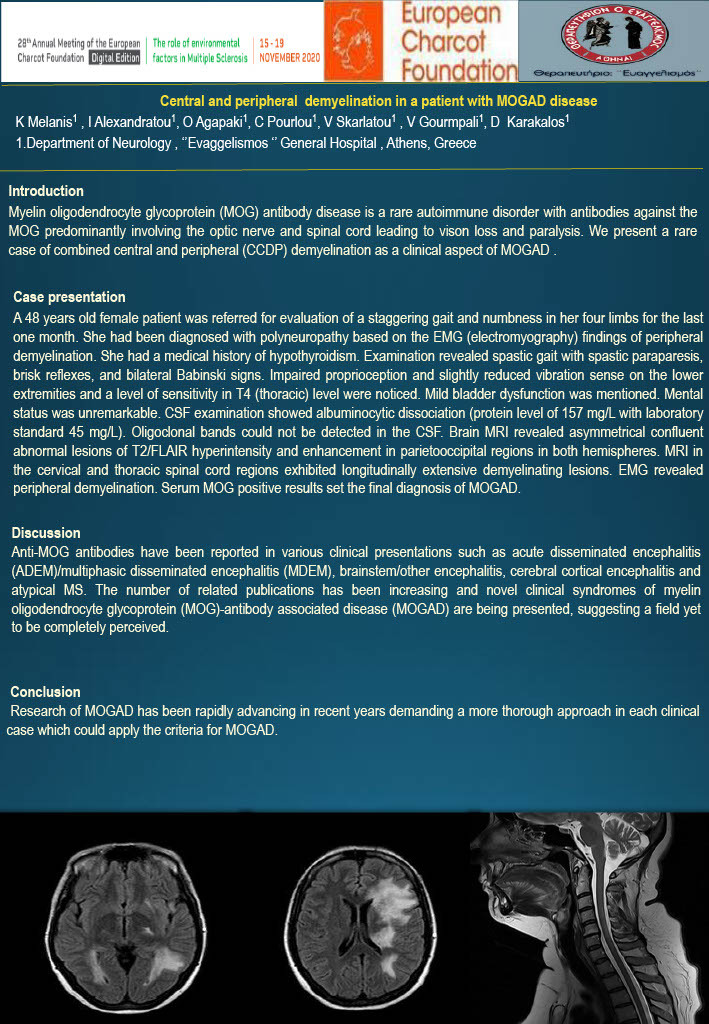Central and peripheral (CCDP) demyelination in a patient with MOGAD disease(MOG Antibody disease)
Abstract
Introduction:
Myelin oligodendrocyte glycoprotein (MOG) antibody disease is a rare autoimmune disorder with antibodies against the MOG predominantly involving the optic ne rve and spinal cord leading to vison loss and paralysis. We present a rare case of combined central and peripheral (CCDP) demyelination as a clinical aspect of MOGAD
Case presentation:
A 48 years old female patient was referred for evaluation of a stagge ring gait and numbness in her four limbs for the last one month. She had been diagnosed with polyneuropathy based on the EMG (electromyography) findings of peripheral demyelination. She had a medical history of hypothyroidism. Examination revealed spastic gait with spastic paraparesis, brisk reflexes, and bilateral Babinski signs. Impaired proprioception and slightly reduced vibration sense on the lower extremities and a level of sensitivity in T4 (thoracic) level were noticed.
Mild bladder dysfunction was mentioned. Mental status was unremarkable. CSF examination showed albuminocytic dissociation (protein level of 157 mg/L with laboratory standard 45 mg/L). Oligoclonal bands could not be detected in the CSF. Brain MRI revealed asymmetrical confluent abnorma l lesions of T2/FLAIR hyperintensity and enhancement in parietooccipital regions in both hemispheres.
MRI in the cervical and thoracic spinal cord regions exhibited longitudinally extensive demyelinating lesions. EMG revealed peripheral demyelination. Serum MOG positive results set the final diagnosis of MOGAD.
Discussion:
Anti-MOG antibodies have been reported in various clinical presentations such as acute disseminated encephalitis (ADEM)/multiphasic disseminated encephalitis (MDEM), brainstem/other encep halitis, cerebral cortical encephalitis and atypical MS. The number of related publications has been increasing and novel clinical syndromes of myelin oligodendrocyte glycoprotein (MOG)-antibody associated disease (MOGAD) are being presented, ssuggesting a fieldfield yet to be completely yet to be completely perceived.
Conclusion:
Research of MOGAD has been rapidly advancing in recent years demanding a more thorough approach in each clinical case which could apply the criteria for MOGAD.

